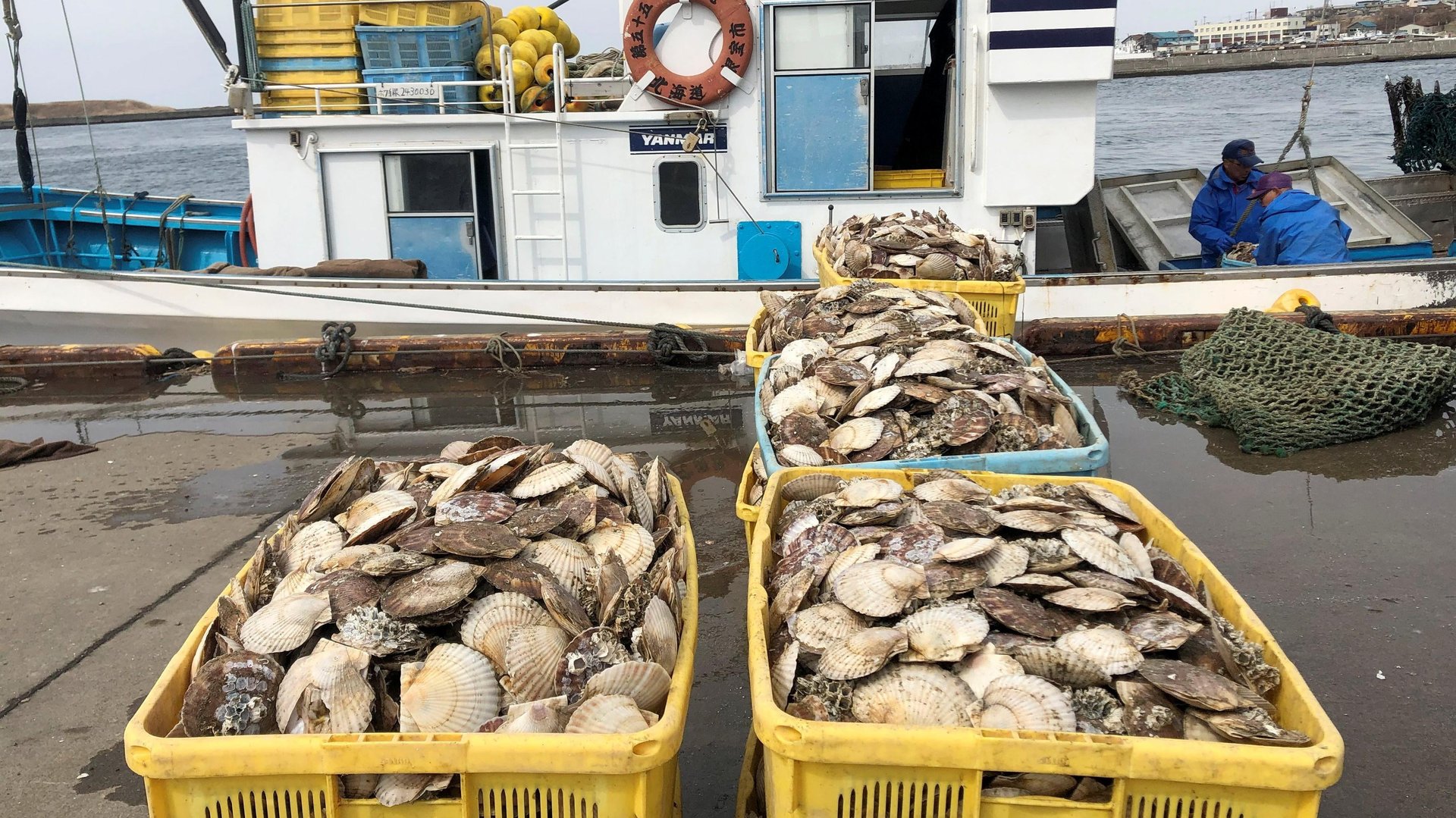The US is buying up the Japanese seafood exports that China banned—but for how long?
The US military enters a "long-term contract" to buy fish as Japan releases nuclear plant wastewater

The US military is helping Tokyo curb the economic fallout from China’s ban on seafood products from Japan.
Suggested Reading
Right after Japan started releasing treated wastewater from the Fukushima nuclear plant in late August, China halted seafood exports from the country. It cited food safety fears from damage to the environment and marine life—a concern dismissed by regulators after thorough investigation. (Never mind that Chinese vessels kept fishing in the same waters.)
Related Content
The US military stationed in Japan has started bulk-buying Japanese seafood to feed soldiers in messes and aboard vessels, and to sell in shops and restaurants on bases, Rahm Emanuel, US ambassador to the country, told Reuters in an interview yesterday (Oct. 30). It’s the first time the US armed forces have bought Japanese fish.
A “long-term contract” has been established between the US military and fisheries and co-ops in Japan, Emanuel said. Washington’s strategy to “wear out China’s economic coercion is [to] come to the aid and assistance of the targeted country or industry,” he added, harking back to his September speech in which he called economic coercion “the most persistent and pernicious tool” in China’s economic toolbox.
This may be a clever diplomatic move, but it’s unclear how sustainable it is. The total release of all the wastewater from Fukushima could take up to 40 years. Would China really keep a ban in place for four decades? And would the US keep coming to Japan’s aid for all that time?
Quotable: China calls the US a troublemaker
“The precautionary measures taken by China and some other countries in response to Japan’s move to protect food safety and people’s health are entirely legitimate, reasonable and necessary....As for the remarks of the US Ambassador to Japan, it needs to be pointed out that the duty of diplomats is to deepen friendship between countries, rather than smear other countries and sow discords.”
—Chinese foreign ministry spokesperson Wang Wenbin’s response during an Oct. 31 press conference
Japan’s seafood exports to China, by the digits
100,000 tons: Volume of scallops that Japan exported to mainland China last year. The US army in Japan has barely made a dent in that number, buying just “shy of a metric ton of scallops” to start, Reuters reported
20.7 billion yen ($141 million): Value of an emergency fund that Japanese prime minister Fumio Kishida announced in early September to help exporters hit by China’s ban on Japanese seafood. The thousand-plus fishermen affected not only have to recover from a hit to physical sales but also from the lasting reputational damage
64%: Share of seafood exports from the northern Japanese island of Hokkaido, known for scallop farming, that used to go to China. Japanese scallops aren’t just for consumption; their shells are removed in China before being exported to the US. Much Japanese seafood is typically sent to China to be processed and sold to the US and Europe, and even back to Japan. Now, scallops and other seafood sit piled up in freezers at Japanese processing plants
11-27%: Price drop for Japanese scallops in the two months since China’s ban
A brief timeline of Japan’s Fukushima wastewater disposal
March 2011: A tsunami triggered by a magnitude 9.0 earthquake floods three reactors of the Fukushima Daiichi Nuclear Power Plant, resulting in a Level 7 nuclear incident—much like Chernobyl. The irradiated water, used to cool the reactors, must be stored in hundreds of steel tanks, which are bolted and sealed with resin to buy operators a few years to decide how to dispose of their contents.
August 2013: Roughly 300 tons of highly radioactive water leak from one of the tanks at Fukushima, according to Tokyo Electric Power Co. (TEPCO), the plant’s operator.
August 2019: TEPCO warns it will run out of storage space for the contaminated water in three years.
April 2021: The Japanese government publishes a report about gradually discharging this water into the sea after chemically treating it.
2021-23: An International Atomic Energy Agency (IAEA) task force inspects the Fukushima facility’s water discharge system several times, studying hundreds of pages of documents and publishing six technical reports.
May 2023: TEPCO predicts that Fukushima’s tanks will reach their full capacity between February and June 2024.
May 10, 2023: Japan’s Nuclear Regulation Authority (NRA) formally approves the discharge plan.
July 4, 2023: The IAEA deems Japan’s wastewater plan to be safe.
Aug. 24, 2023: Japan begins releasing wastewater from the Fukushima plant into the Pacific Ocean. Immediately, China bans seafood exports from Japan.
Oct. 29, 2023: G7 trade ministers call for the immediate repeal of bans on Japanese food products.
Oct. 30, 2023: The US military starts buying Japanese seafood.
